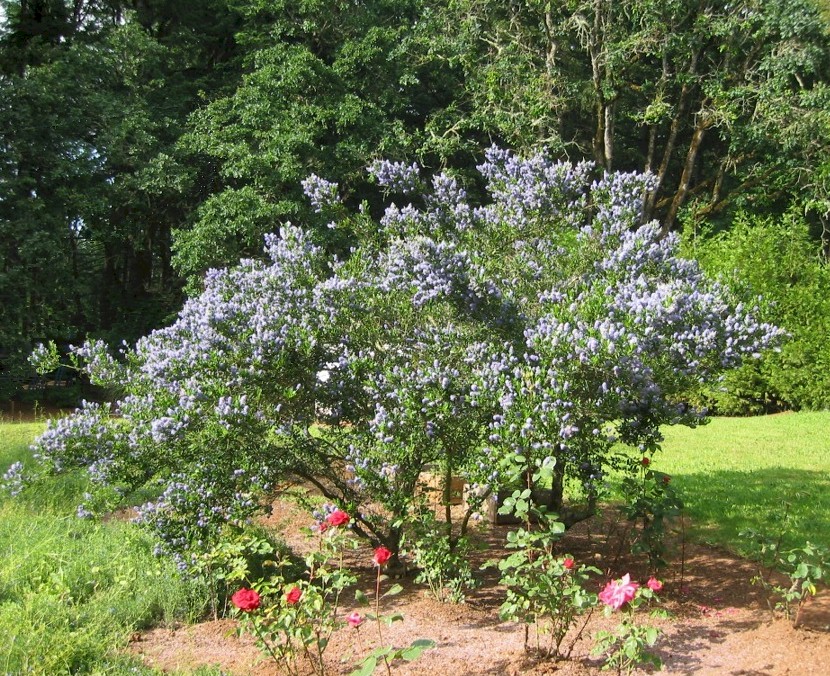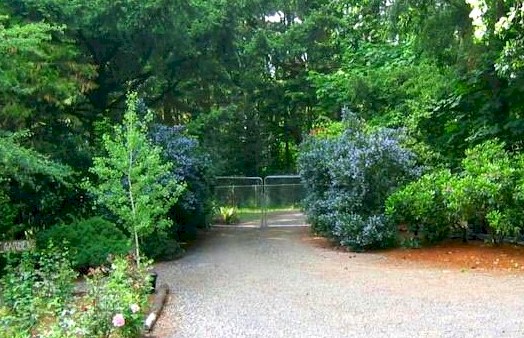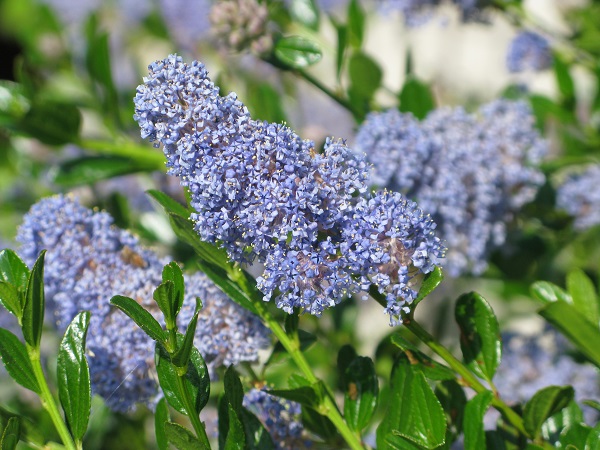|
|
|
Hansen's Northwest Native Plant Database |
|
|
|
Ceanothus thyrsiflorus (Blueblossom, California Lilac)
|
 |
||||||||||||||||||||||||||||||
|
Truly blue flowers are hard to find--a fact all gardeners know well. Most of us have tried "blue" cultivars of many types of shrubs and perennials only to be disappointed once again with another lavender bloom. Yet we have only to turn to nature to find a shrub with flowers so blue they seem almost to vibrate in the bright sun. No hybridized bloom can compare with the northwest native Ceanothus thyrsiflorus, commonly called Blueblossom. It is an awesome sight to get right up close to these beautiful shrubs. In full bloom, Blueblossoms are a living Van Gough Painting! (But beware of black bees with yellow bands around their middles!) If you're fond of honeybees and bumbles and hummingbirds or if true blue is your favorite color, consider adding a Blueblossom (Ceanothus thyrsiflorus) to your landscape. |
|||||||||||||||||||||||||||||||
|
This is the "blooming-est" bush of the northwest ceanothus. Starting about a week or so mid-May and continuing for a solid month, the Blueblossom dons a coat of thumb-size blue flower clusters made of tiny little blue blossoms. Just before they open, the buds are a sort of pinky lavender color. Then they explode into beautiful densely packed fleurets that decorate the whole shrub.
We highly recommend this all-star native shrub for all gardens whether large or small, city or country. It thrives in sun or shade and require minimal care. I've never watered mine. It grows beneath a huge Doug Fir and blooms its little heart out every year. The only thing Blueblossom lacks is strong fragrance but with all that beautiful blue, the lack of aroma is rarely noticed. This is the rose garden Wally created for Audrey. It was a source of pride for him, checked it every day (in the morning, I think) to be sure it was perfect for his beloved. He added the Ceanothus thysiflorus for contrast with the roses, and to protect them from the deer that came through the forest at the edge of the yard. I guess, though the roses were delectable, he thought the shrub would mask their scent. He also kept an old apple tree in the back for their dining pleasure. |
 |
||||||||||||||||||||||||||||||
|
Next spring the cheerful green leaves will be fresh and delightful when the deciduous trees beh.ind them are still bare. And early in the summer the small clusters of tiny true blue flowers will come again. Neither the glossy leaves nor the abundant flowers will make a mess for the gardener to tidy. The evergreen leaves stay where they are and the tiny flowers fall as individuals, forming a thin blue haze beneath the shrubs until the slightest gust of wind blows them away. The queen of wild evergreen lilacs, Blueblossom reigns with grace and majesty from southwestern Oregon to southern California (USDA zones 8-10). The flowers resemble the top of the “thyrsus” - the staff of Dionysus, that unruly Greek God of wine. This particular variety is a selected compact form which grows rapidly to about 6’ tall and 5’ wide - ideal for gardens close to buildings. It is covered with bright, evergreen leaves and beautiful, deep lilac blue flowers in the spring which are intense--vibrant! Blueblossom does well in sun or shade and requires minimum care or water. Blueblossom is a must for west side gardens. For a short comparison of northwest native ceanothus, click here. |
|||||||||||||||||||||||||||||||


 |
|||||||||||||||||||||||||||||||


 Photo, left, credit: Miguel Vieira - Flickr: Blue blossom ceanothus on Point Reyes Fire Lane Trail; Photo, center, credit: Salix; Photo, right, credit: Hedwig Storch, Madeira, Palheiro Gardens |
|||||||||||||||||||||||||||||||
|
|||||||||||||||||||||||||||||||


 Photo, center, credit: Cc80804 |
|||||||||||||||||||||||||||||||
|
Snow storm? No problem.
The map above shows the native region of this outstanding evergreen shrub. |
Photos We Share!
|
||||||||||||||||||||||||||||||
|